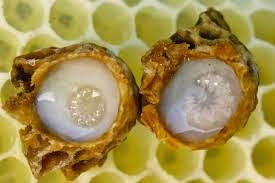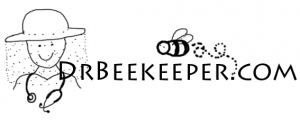What is Royal Jelly?
Royal Jelly is a milky secretion produced by glands of the worker bees and used to feed all larvae in the colony regardless of sex. After the first three days of life, the male larvae (drones) and female larvae (worker bees) stop being fed royal jelly. However, fascinatingly, when a colony decides to make a new queen, the worker bees continue to feed a few larvae excessively with royal jelly in specially constructed queen cells (hence the name royal jelly). This results in a change in the morphology of the developing queen bee even though, genetically, queen bees are identical to worker bees. Royal jelly contains ~67% water, 12.5% protein, 11% simple sugars, and 5% fatty acids. Additionally it contains a number of vitamins and minerals including Vitamin B5, Vitamin B6, and Vitamin C.
What are the health benefits?
Royal jelly is used for a wide range of medical conditions. It has been used to reduce cholesterol, for relief of menopausal symptoms and premenstrual syndrome, asthma, hayfever, pancreatitis, liver disease, insomnia, kidney disease, bone fractures, skin disorders, and hair loss amongst an array of other conditions.
 How is it taken?
How is it taken?
There is very little evidence about how royal jelly should be taken. It is often collected and sold as a dietary supplement or used in skin care and beauty products. In terms of side effects, in some people it can cause allergic reactions such as throat swelling, asthma, skin rash, and in extreme cases anaphylaxis. If applied to skin, it may make dermatitis worse. However, for most people, when used in the short term it is thought to be safe. It should be avoided in pregnancy and breastfeeding as not enough is known about it’s safety during these periods. In terms of interactions with drugs, people taking the blood thinner Warfarin (Coumadin) need to speak to their doctor as royal jelly can increase the effect of Warfarin and therefore increase the risk of bruising and bleeding.

How is it made?
Royal Jelly is collected from queen cells as these are the only cells where it is deposited in large enough amount to be harvested. In contrast, worker bees feeding worker larvae produce it and feed it directly to them. In a good colony it is possible to make up to 500g of royal jelly over a 6 month period. Once harvested, royal jelly needs to be immediately stored in a cool place such as a refrigerator or freezer. It’s shelf life can be prolonged by combining with other hive products such as honey or beeswax.
Disclaimer: Always seek medical advice before trying any new health or medicinal product.
This article is reproduced with permission from DrBeekeeper.com.



